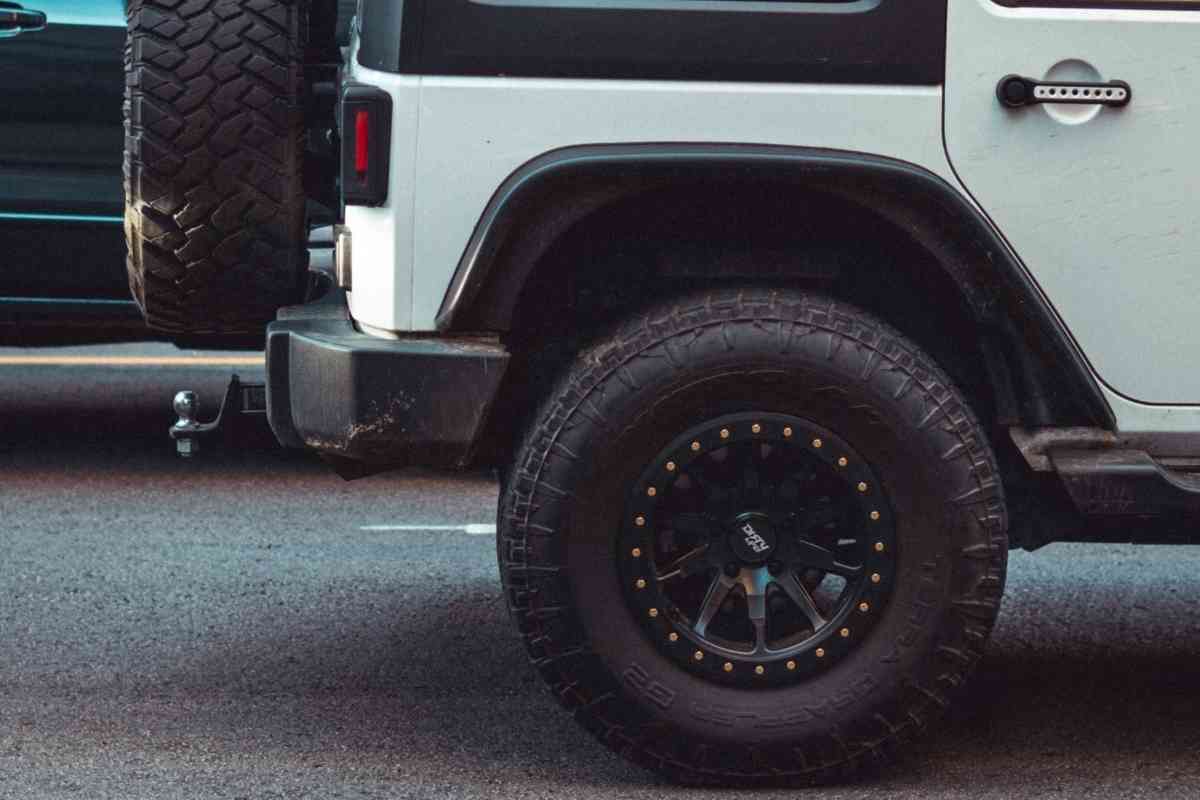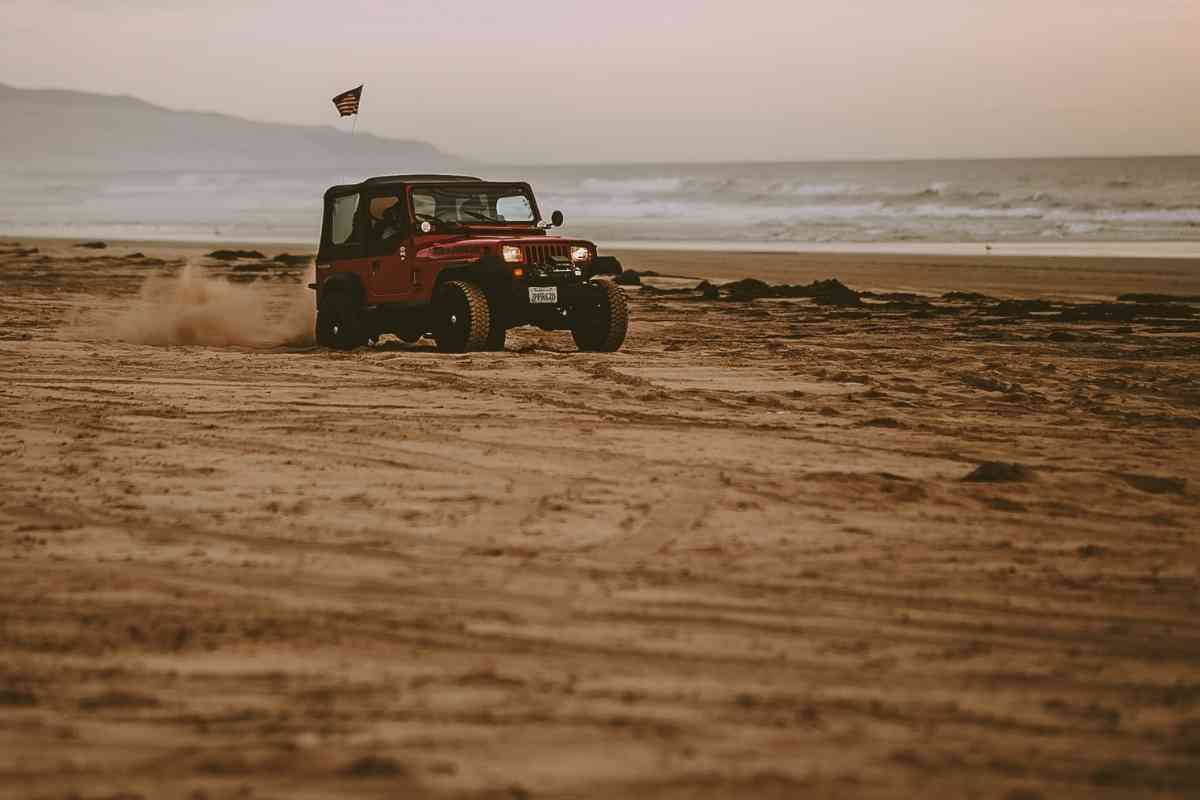What Gear Ratio Do I Need For 33-Inch Jeep JK Tires? (It’S An Easy Answer!)
Gear ratios aren’t easy to understand, though we feel the difference. Jeep JK enthusiasts might be left wondering what gear ratio is best for 33” tires.
A proper gear ratio can make a big difference in your Jeep. Like the rest of your vehicle, the gearbox and gears work in a way that requires coordination to work in just the right way.

What Gear Ratio Do I Need For 33-Inch Jeep JK Tires?
For 33-inch Jeep JK tires, a single gear ratio – or even multiple, might not be the right answer. Since you can replace the gears on your Jeep JK, we’ll discuss how gear ratios from 3.2 on up will impact the performance of your Jeep JK.
Gears make a big impact on the performance of your vehicle, especially if you change tire sizes. We’ll explain what difference changing gears makes and how to decide which gear is best for you.
We’ve worked in automotive for a while and respect cars and off-roaders. We’ll look at what experts have to say about how to properly gear your Jeep JK for the right kind of driving.
Why is the right gear ratio important?
Your Jeep JK is the sum of many moving parts from tires, axles, driveshafts, pistons, and a starter system. It was designed by Jeep to operate within certain tolerances while providing the right amount of torque and speed at the right time to produce smooth, safe, fairly economical speed.
While trying to achieve certain gas mileage quotas set by the government – and more friendly to your wallet as you hit the gas station – one big concern is how hard the engine has to work to achieve speed.
That’s why answering the question, “what gear ratio do I need for 33-inch Jeep JK tires?”, is quite complex. However, it’s not impossible.
To understand this, we must first understand gear ratios.
What does the gear ratio do?
Few people outside of the offroad and truck world think about gear ratio. The gear ratio is a representation of the size of gears, and how many turns of gear it will take to completely turn the wheels on your Jeep JK for one full revolution.
How does the gear ratio impact the vehicle?

This is a crucial part of answering, “What Gear Ratio Do I Need For 33-Inch Jeep JK Tires?”.
So, we’ll break this down very simply: a higher gear ratio (with a lower number) provides the Jeep with better torque and acceleration.
A lower gear ratio (with a higher number) gets higher top speeds and better fuel economy by asking the engine for less work at a higher speed.
Which gear ratios am I picking?
To be clear, there are more than a few gear ratios to pick from.
The answer to, “What Gear Ratio Do I Need For 33-Inch Jeep JK Tires?” also depends on your Jeep Wrangler’s JK’s engine size and transmission. Generally speaking, the most advisable gear ratios for the Jeep JK with 33” tires are 3.73, 4.1, or 4.56. We’ll also discuss the next gears up.
Likely results from 3.73
3.73 is the standard gear ratio for most automatic Jeeps before any tuning. This also means that the tires that come with your Jeep are likely smaller.
At 3.73, your Jeep with normal tires feels, well, normal and gets optimal highway gas mileage, and does OK off-road.
However, with 33” tires, you’ll probably have a sluggish feeling Jeep that is working extra hard to achieve highway speeds because the tires require more effort to turn at the right speed.
The result is worse gas mileage. So, part of answering, “What Gear Ratio Do I Need For 33-Inch Jeep JK Tires?”, lies here.
We don’t recommend the 3.73 for daily driving with 33” tires.
Likely results for a 4.1
You are looking more at the sweet spot for your Jeep JK with 33” tires. The higher gear ratio better balances the torque and speed your Jeep JK is capable of, and it will feel better all around for everyday driving.
Your fuel mileage should return to normal at highway speeds and acceleration is what you expect of your Jeep with smaller tires.
4.1 is at least a better gear than 3.73 for rock crawling or off-roading. The actual fuel economy will be more averaged out in these situations. You’ll enjoy the amount of torque that 4.1 produces when trying to drive through mud, dirt, or obstacles.
So, when answering, “What Gear Ratio Do I Need For 33-Inch Jeep JK Tires?”, think about this ratio.
Likely results for 4.56
For 33” tires, consider this an all-around performance gear. You’ll now get more out of your engine, and be more capable of rock crawling and off-roading.
Your fuel economy might suffer a bit, but this is a good combination of torque for off-road and more extreme, and the power to merge on the highway.
After all, the answer to “What Gear Ratio Do I Need For 33-Inch Jeep JK Tires?” involves how your Jeep will also behave in these conditions.
Above 4.56 to 4.88
There are a few gears, though 4.88 is likely the highest you’ll go in a Jeep JK, even with 33” tires. To get the most performance out of 4.88, we recommend going even bigger and getting 35” tires if they fit on your Jeep.
Considering that changing out the gears on your Jeep can be a little bit of a chore, you could reasonably put 4.88 on your Jeep if you plan to alternate between 33” tires and 35s.
Can I go lower?
Going lower than 3.73 would be an odd combo for 33” tires and not likely the best route for fuel economy or efficiency.
So, “What Gear Ratio Do I Need For 33-Inch Jeep JK Tires?” most definitely doesn’t include going lower than 3.73.
Crawl Ratio: Another set of numbers
Crawl ratio is another factor to consider in your Jeep, especially if you plan to do serious off-roading on inclines and downhills – and you want to come back without towing your vehicle out.
The crawl ratio is more telling of what happens to your Jeep at much slower speeds and helps you keep control of your vehicle.
At low mph, the ratio can also give you the power to climb inclines that you might encounter while rock crawling, considering your Jeep is trying to lift its own body and you at an angle you wouldn’t try in a normal vehicle.
You arrive at a crawl ratio by multiplying the transmission’s first gear ratio by the transfer cases’ low gear ratio and the axle gear ratio.
A somewhat normally geared Jeep running a 3.83 gear and a 2.72 low gear ratio, along with a standard axle gear ratio of 3.73 is multiplying 3.83 times 2.72 and 3.73 to arrive at 39. This is a low ratio.
When you change gears to higher ones, like the 4.88, you’ll start climbing higher into the 60s. You’ll actually want to reach all the way to the 80s and higher for ideal crawling and control.
What should I know about regearing?
Regearing is the process of replacing the existing gears in your Jeep, often the standard 3.73s, with larger ones to accommodate the performance needs of larger tires like your 33”s.
Can I do it myself?
Sure! You’ll need some serious Jeep knowledge and tools in your garage, but you could do it. You’ll end up draining the differential’s gear oil, taking off the axle shafts, then putting new gears in with fresh gear oil, then closing it up.
You’ll probably want to take it easy on your Jeep after regearing and don’t go off-roading quite yet. Change your differential oil after a few hundred miles to get any metal chunks out.
You’ll also want to take time to notice the difference in driving to see if you did it right – and to see if you found the right gear.
The process will likely take hours or the better part of a weekend unless you’ve done it before. Some people are willing to pay a trusted mechanic to change gears, but we are all for encouraging do-it-yourself.
The actual cost could be between $1,200 to $3,000 depending on the setup and the expert.
Does the engine matter?
Answering, “What Gear Ratio Do I Need For 33-Inch Jeep JK Tires?” also requires that you analyze the engine.
The engine does indeed matter. We suggest finding a gear ratio chart that applies directly to your Jeep JK’s particular engine and transmission type to find the best gear ratio for your Jeep. The answer should be fairly close to the general ones we provided above.
Can regearing be undone?
Yep, you can have a mechanic – or yourself, undo the process of changing gears by installing gears that are close to the original – or different if you want. While some Jeep buyers might consider a regeared Jeep a selling point, others might be put off by anything other than the standard 3.73.
How do I know which gear ratio I have now?
So, you want to answer, “What Gear Ratio Do I Need For 33-Inch Jeep JK Tires?”, and chances are your car has no modifications.
You can know one of a couple of ways. The easiest is to assume there haven’t been any modifications to your vehicle. Look at the build sheet and see if it suggests what axle ratio is provided.
If you don’t have the build sheet and can’t get one – and you didn’t buy the vehicle new, we suggest discovering manually.
You’ll want to use jacks to raise your Jeep and the rear axle. Have another person help you, and shift the Jeep into neutral. Get underneath the Jeep and turn the driveshaft manually and carefully look to see how many times it takes to turn the rear wheels once time.
The answer can be a quarter number like 3.25 or 3.5 so carefully count and communicate when the tire rotates completely.
You can use this information to decide which gear ratio you want to switch to – if you do it all.
Does the tire size matter?
Yes, that’s actually one of the reasons why you would want to regear. Bigger tires might need to spin faster or slower depending on your wants, and regearing when doing a major change to tire size – or wanting your Jeep to act differently, is the biggest step to getting the most out of your vehicle.
Going bigger with tires will probably require going bigger with gears, too. Depends on what you want out of your Jeep!
What if I gear it too high?
Gearing too high means your tires, nor your vehicle, will be able to make the most out of the conditions present. Since the gear ratio also represents torque vs speed, you might notice that your vehicle feels slower and gets up to speed in more time.
